Best Cataract Surgery In India
100 % Painless, Bladefree & Stitchless procedure with best Laser Cataract Surgery in India.
- Free Consultation By Best Surgeons
- Hassle-Free 20 Mins Procedure
- Cashless/ EMI/ Insurance Options
- 5000+ Successful Surgeries
FREE Tele-Consultation
Book Appointment or Video Consultation online with top eye doctors
What is Cataract Surgery?
A cataract is a condition in which the lens of the eyes gets clouded creating diminished vision. Cataracts occur because protein builds up in the lens of the eye and it is common among old-aged adults.
Cataracts cause the eyes to look foggy, clouded, and milky in appearance. This may result in facing difficulty in driving, reading, or remembering faces. Cataract surgery involves replacing the cloudy lens with a new clear lens .
Cataracts are among the main causes of loss of vision among adults over the age of 45 and remain the principal cause of blindness across the world. It has been estimated that over 1.3 billion people are living with one form or the other of this disease. Eye Mantra offers the best surgeons and latest equipment to perform your Cataract surgery.
Causes Of Cataract
- The most common cause of cataracts is lens degeneration due to ageing.
- Cataracts can also be a result of health diseases such as diabetes, kidney disease, glaucoma, smoking, eye injuries, infection, and swelling inside the eye.
- Prolonged use of some medications can also lead to cataract development.
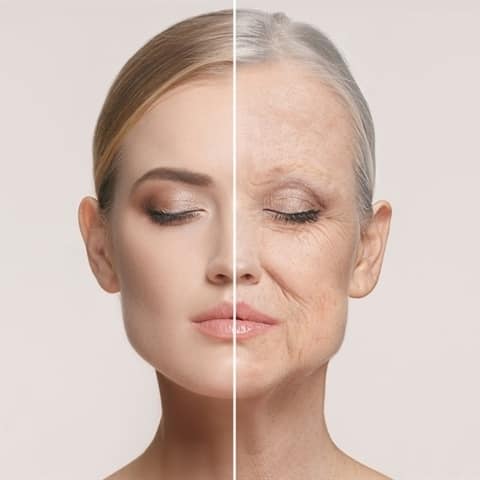



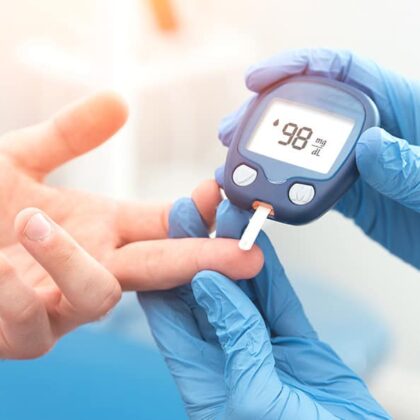

Symptoms Of Cataract
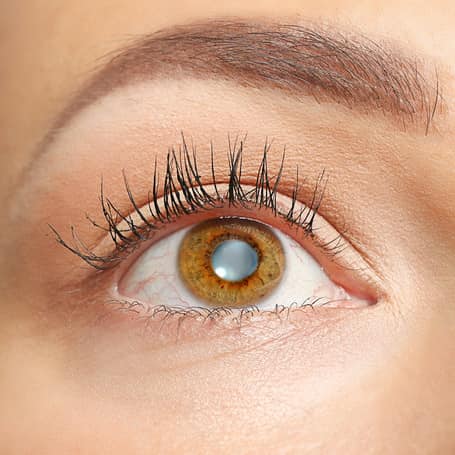





Treatment
The only solution to cure cataract is surgery. Once your lens becomes cloudy or white due to cataracts, no medicine can get it back to being transparent. Lens replacement by surgery is the only feasible means to treat it.
But the good news is that cataract surgery is one of the safest surgeries in the world. Cataract surgery improves the vision of 95 % of patients who have it.
The basic principle of cataract treatment is the elimination of the cloudy lens by surgery and injection of the artificial lens. There are 3 key choices to make before your cataract surgery: type of cataract surgery, type of lens or IOL and time for cataract surgery
Types Of Cataracts
There are various technologies and basic techniques for cataract surgery such as Phacoemulsification, MICS and Robotic Surgery
Traditional cataract surgery:
This is a manual surgery where a scalpel blade is used to create an incision in the cornea by hand. The cataract is then fragmented into smaller pieces. The fragmented lens is then removed using suction. This surgery involves stitches, and your eye takes longer time to recover
Phacoemulsification:
This is the most common form of cataract removal and modern cataract surgery. In phaco, the eye’s inner lens is emulsified or broken with an ultrasonic handpiece.Once the old cloudy lens is broken, it is sucked out and a new lens is placed.
MICS:
This is also called Micro Incision Cataract Surgery and involves the same procedure as phaco surgery. The key difference is the size of the incision or that you make in the eye i.e 1.5mm compared to 3.2 mm in traditional surgery. This is a safer option, as outcomes in cataract surgery depend on the size of the incision. The visual results and recovery time are much better given the incision size is small.
Robotic Surgery (Bladeless Femto Laser Cataract Surgery):
This type is the epitome of technology for cataract surgery. The treatment utilizes computer programming and laser energy to perform the surgery. A device named LENSAR is used to break the cataract. Laser (Femtosecond Laser) creates corneal incisions to access the cataract.
Zepto Cataract Surgery Stitch-less:
Zepto cataract surgery is somewhere between MICS and Robotic surgery. It is a procedure in which a handheld disposable device is used to create a clear-cut and precise incision in the crystalline lens of the eyes. Zepto surgery is in many ways much better than MICS and economical compared to Femto laser cataract operation.
Traditional Vs. Laser Cataract Surgery In India
| Basis | Traditional Cataract Surgery | Laser Cataract Surgery |
|---|---|---|
| Use of blade | Surgeon practices blade to create a hole in the eye for surgery. | No use of the blade in laser surgery as everything is through machines and computers. |
| Time is taken in surgery | The procedure takes about 20-30 minutes per eye. | This procedure takes less than 5 minutes. |
| Blade-free | It’s not 100% blade-free surgery. | It is 100% blade-free, with no pain and stitches during surgery. |
| Risk | It is slightly computer-controlled but has lots of risk factors. | The existence of an OPC is never dependent on the Nominee or Director. Can be dissolved by Regulatory Authorities. |
Cataract Surgery Lens Options
An Artificial lens (or IOL) is implanted at the time of cataract surgery. The quality and type of this lens play an important role in vision clarity. Below are some of the key lens options:
Monofocal Lens
Monofocal lens is the most common lens used for cataract surgeries. It is very affordable. They have mono focus or single power. The can give high-quality distance vision. However, spectacles may be needed for near vision.
Multifocal Lens
Multifocal lenses are better than monofocal lenses and improve distance as well as near vision. They come with advanced options such as computer or blue light filters and anti PCO rings. But, multifocal lenses are not for everyone. They can cause significantly more glare and loss of differences than Monofocal or toric lenses.
Trifocal Lens
Trifocal lenses are an upgrade to multifocal lenses and improve distance, near as well as computer vision. They have special filters that prevent eye strain due to constant computer work. They come with advanced options such as blue light filters and anti PCO ringsl or toric lenses.
Toric Lenses
Toric lenses improve distance, near as well as cylindrical powers. The Toric lenses can improve astigmatism as well. Also, they don’t have glare issues as that in case of multifocal lenses. While toric lenses can correct distance vision and astigmatism, the patient still will need corrective lenses for all near tasks, such as account or writing.
Cataract Surgery Cost
The complete cost of cataract surgery depends upon the “Type of lens” and the “type of surgery procedure”. The cost of a Cataract surgery varies between Rs.10,000 to Rs.90,000. For example, the cost of a traditional cataract Surgery with “Indian Lens” starts at around Rs.10,000, Phaco Cataract Surgery with “Imported lens”, comes around Rs.20,000 and MICS with “Imported Lens” comes around Rs.35,000.
| Lens | Brand | Price (₹) | Benefits |
|---|---|---|---|
| Monofocal (Distance Vision) | Ocuflex, Acryfold | 12,000 | Low cost lenses that provide excellent vision at a single distance |
| Acriol | 20,000 | ||
| Acriol EC | 30,000 | ||
| Acrivision, Alcon | 40,000 | ||
| Multifocal (Distance & Near Vision) | iDIFF Plus | 35,000 | Medium cost lenses for correcting nearsightedness and farsightedness |
| AcriDIFF | 45,000 | ||
| EDOF (Extended depth of focus) | Magnificient | 40,000 | Medium cost lenses for good vision from close up to far away, so you don’t have to wear glasses or contact lenses as much. Offer better clarify than multi-focal |
| Lux Smart/ADTEC/Xtend | 75,000 | ||
| Tecnis Puresee J&J | 1,10,000 | ||
| Panfocal Lens (Distance, near & computer) | Naturo | 70,000 | Premium high cost lenses with Anti-glare , HD vision, Anti PCO ring & Blue light filter features |
| Toric (Distance & Cylindrical Power) | Acriol Toric | 40,000 | Medium cost lenses for correcting distance as well as cylindrical vision |
| Zeiss, Alcon, B&L Toric | 50,000 | ||
| Trifocal (Distance, Near & Computer Vision) | Tridiff (Hydrophilic) | 45,000 | Premium high cost lenses with Anti-glare , HD vision, Anti PCO ring & Blue light filter features |
| Alcon Panoptics/ Zeiss | 90,000 |
Eye Mantra foundation provides free cataract surgeries for the “underprivileged sections of society”. So anyone who is unable to afford the treatment expenses, can come to our hospital and get this cataract surgery done free of cost or at a very nominal price.
*Above prices are rough estimates
Cataract Surgery Procedure
Cataract surgery is an outpatient surgery which means that it does not require an overnight stay at the hospital or health care facility. It is generally performed with one eye at a time.
Cataract eye surgery can be performed any of the procedures, such as traditional, phaco & MICS. These techniques are used to make the incision, break the cataract and suck it out of the eye. Artificial Lens is then implanted into the eye once the cataract is removed. Let discuss all the stages in details:
Before Cataract Surgery
Your surgeon will check your eye to see the proper focusing power for your IOL. You will also be asked not to take some of the medicines before surgery. You may be prescribed eye drop medications to begin before surgery. These medications assist in preventing infection and decrease swelling during and after surgery.
You should not eat a solid meal at least 6 hours before your surgery. The surgery for cataract removal can be done in a clinic or hospital with just a 15-20 minutes procedure.
During Cataract Surgery
Here is what will follow:
- Your eye will be numbed with eye drops or with an injection.
- The surgeon applies these incisions to enter the lens in your eye.
- Surgeon will break up the lens with the cataract and eliminate and replace it with your new lens
- Usually, your surgeon will not require to stitch the incisions
- A shelter will be placed over your eye to preserve it while you recover from surgery.
Post Cataract Surgery
After the surgery, the surgeon might want to do a post-op evaluation and give instructions for recovery after the surgery:
- It is advisable not to drive right after the surgery and have someone accompany you for the surgery who can drive you back as well.
- Medicated eye drops will be administered to you and you will have to use them for a few weeks.
- Protective eye shields need to be worn as well
- It is advisable to avoid Heavy lifting, Bending, intensive exercises, swimming pools
When To Have A Cataract Surgery
The decision on when to have cataract surgery depends on the level to which your vision is impaired, balanced by the tiny risk that surgery entails. However, delaying the cataract beyond a point can lead to grave risks. The hardened cloudy lens might explode in your eye, making you blind forever.
You should start considering cataract surgery if you are:
- Facing hindrance in your daily activities such as driving, reading or cooking
- Undergoing cloudy vision
- Observing bright colours as faded
- Experiencing double visions
- Undergoing poor night vision
Best Hospital For Cataract Surgery
India has many eye hospitals for cataract surgery such as Shroff eye, AIIMS, Sankara Netralaya and Eye Mantra. Eye Mantra is one of the leaders in Cataract treatment with over 100,000+ eyes operated so far by its doctors.
We are amongst the 1st few to have a Laser Femto Assisted Surgery Unit in India. The technology enables the correction of pre-existing astigmatism. Latest technology with a complete range of premium IOLs, gives the most beneficial results after cataract surgery by our top cataract surgeons in India and other cities.
Consult with our expert eye doctors today. We strive to improve the quality of life and provide the best eye care facilities at the most affordable prices.
Top Cataract Surgeons

Cataract, Retina, Glaucoma, LASIK

Retina Specialist

Cataract, Retina, Glaucoma, LASIK
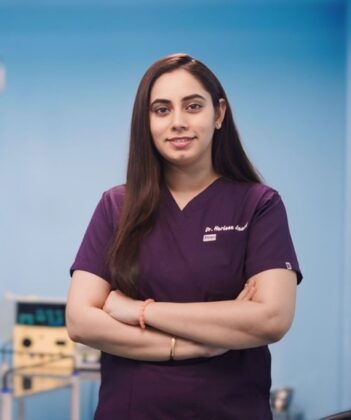
Cataract, Retina, Glaucoma, LASIK
Squint Facilities
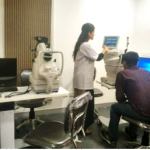
OCT
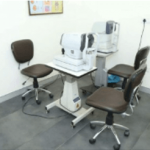
NCT Tanometer
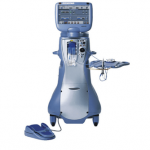
Phaco Machine

Post Operative
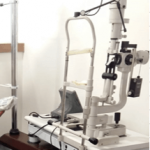
Slit Lamp
FAQ's
A cataract is the clouding of the natural lens of the eye. It is the most common cause of vision loss in people of age 40 and is even the leading cause of blindness in the world.
Cataract surgery is performed by an ophthalmologist, an eye doctor. Your ophthalmologist will examine your eye condition and if needed will perform the surgery.
A cloudy lens blocks light from concentrating properly on the back of the eye which points to a range of vision difficulties. These may include:
- Blurred Vision
- Sensitivity to Light or Glare
- Poor Night Vision
- Difficulty driving or using a computer
- Double Vision
- Colours appear faded or dim
There are various types of cataracts, some of them are:
- Subcapsular Cataract – Cataracts occurring at the back of the eye lens.
- Nuclear Cataract – This occurs in the central zone of the eye’s lens.
- Cortical Cataract – White Wedge-like opacity that starts at the edge of the eye lens but slowly works its way to the centre (Nucleus).
- Growing Ages – Nearly half the population by the age of 60 develops cataracts and about 80% of people get a cataract in at least one eye by the age of 70 years.
- Traumatic Cataract – A direct injury or trauma can cause damage to the eye leading to cataracts. It can be progressive or instantly after a trauma.
- Metabolic Cataract – Various disorders in body metabolism including autoimmune diseases like diabetes and galactosemia can cause cataracts over time.
- Secondary Cataract – In several cases, cataract develops as a result of some other primary ocular disease such as chronic eye inflammation or glaucoma.
Steroid-induced Cataract – Excess intake of oral steroids or inserting steroid drops in the eye can create cataracts. It is always recommended to ask a doctor before using one.
Cataracts normally affect patients over age 55, but anyone can catch this problem. They occur due to the normal ageing process. Other reasons can be:
- Poor lifestyle habits such as prolonged use of steroids, smoking or alcohol intake.
- Environmental factors such as over-exposure to harmful UV rays of the sun.
- Auto-immune diseases like Diabetes, Obesity & Hypertension
- Eye injuries or a history of eye diseases in the family.
In general, there is currently no way to stop age-related cataracts.
Though, people with diabetes may reduce their risk of developing cataracts by fully controlling their blood sugar levels.
To help stop infection-related congenital cataracts, women must get checked with their doctors about their demand for rubella immunization before becoming pregnant.
Nothing, as such you have to take care of a few things like inserting the eye drops suggested by your eye doctor several. We ask that you begin eye drops 4 days before eye surgery. These drops will not harm your vision. They are used to prevent and control inflammation, infection and pain. You will maintain these drops for 2 weeks after surgery. You will also be provided with a detailed pre and post-operative instruction sheet before surgery with exact directions on how to take your eye drops.
The cataract procedure itself only takes 10‐20 minutes. However, aftercare requires a certain period of time.
Most normal activities can be continued within a day of surgery. In common, you should begin a normal life but avoid very difficult tasks like sports. Do not rub your eye and avoid swimming for 1 week after your surgery. Your ability to drive will depend on how fast your vision restores and the contrast among your eyes after the surgery.
This will depend on the kind of intraocular lenses (IOLs) used for you. The high-level intraocular lenses such as multifocal or accommodating IOLs exceedingly decrease dependency on glasses. In most cases even reading glasses can be avoided.
During cataract surgery, your surgeon will give you local anaesthetic numbing eye drops to prevent you from experiencing pain throughout your procedure. You will also be provided with a mild sedative to assist you to relax. Depending on the patient and the kind of procedure, extra medication may be used.
As the medications wear off, you may feel a scratchy sensation or slight soreness in your eye the first day. Over-the-counter pain relievers can be done to ease discomfort. If important, your doctor will guide stronger pain medication.
With any surgery, you will experience pain, infection, swelling, and bleeding. Cataract is one of the safest surgeries. But very few people undergo serious cataract surgery complications. In a few cases, side effects from the procedure can be managed with medication.
To decrease your risk after cataract surgery, be positive in following the directions of your surgeon, and describe any unusual symptoms directly.
No, a cataract can’t develop up again as the IOL implantation never requires maintenance and replacement. It is very rare in few patients that a cloudy film is formed behind the implant on the lens capsule membrane, normally a few months later after the surgery. This condition is named a secondary cataract.
In 20-30% of cases months later after the surgery, the posterior part of the lens capsule that is left inside the eye while surgery for security reasons becomes cloudy, causing vision to again become blurred. This is a secondary cataract. That is also called posterior capsular opacification which normally can be simply treated with a less invasive follow-up procedure called a YAG laser capsulotomy.
No, usually in cataract surgery one eye surgery is performed at once. The doctor cannot operate both eyes together. This enables the surgeon to judge the outcome of the first procedure before operating on the other eye. This evaluation may affect the decisions made for the second surgery, particularly in cases using an accommodative or multifocal lens
The procedure of Extracapsular cataract surgery is usually applied to the person suffering from the most advanced cataract and the lens is very thick to dissolve into fragments or when phacoemulsification is impossible. Extracapsular cataract extraction normally needs an injection of numbing medication around the eye and an eye patch after the operation.
The Intracapsular cataract surgery technique needs an even more open wound than extracapsular surgery, and the surgeon separates the entire lens mutually with the encompassing capsule. This technique needs the IOL to be inserted in a different location, in front of the iris.
Early symptoms of cataracts involve blurred vision, glare, and stress on the eyes while reading.
- Cataracts will affect most people and become more noticeable as age grows.
- Cataracts can be diagnosed when the doctor observes the eyes with specific viewing instruments.
- The choice to continue with cataract surgery is essentially based on the number of problems you have while performing your regular activities.
- Treatment for cataracts is the operational removal of the cataract with the implantation of an artificial lens.
- Several kinds of intraocular lens types can restore vision in varying ways.
- Cataract surgery is a reliable and efficient way to restore vision with severe complications being unusual.


